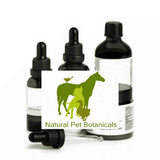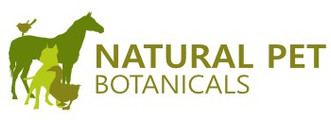

Soft Tissue C Health Support - Set of 5

Soft Tissue C Health Support - Set of 5
Educational Note
Soft Tissue C Support
This set is designed to provide broad systemic and tissue health support. It combines traditional homeopathic blends, herbs, and nutritional elements that have long been used to encourage balance, resilience, and overall well being.
Formulated for those looking to:
-
Support general soft tissue health
-
Encourage the body’s natural balance and harmony
-
Complement daily wellness routines
Each formula in this set has been selected to work together as a holistic support program, with both internal and topical options included.
No therapeutic claims made.
Natural Pet Botanicals Recommendations formulas are both effective and gentle in supporting the whole body, you support your own animal or pet at home, and in almost every single case we improve vitality and longevity. If you are dealing with any metabolic or immune issue with your pet, we suggest that you contact us for a consultation so we can ensure you are using the right products.
* Natural pet botanicals are not intended to replace veterinary care or medication. Our formulas are offered as an alternative health support for your animal's condition and not as a cure. All our oral supplements are to be consumed voluntarily by your animal in food, treats or liquid.
2. CF-2 10M formula 50ml
3. Herbal Drainage 171-4 Mix
4. Trachi Support 313-4 formula 50ml
5. Kit Set of 4
INGREDIENTS AND TRADITIONAL ASSOCIATION
Formula 1.
Astaxanthin (Haematococcus pluvialis 0.1) – A natural antioxidant derived from microalgae, traditionally associated with cellular protection and vitality.
Club Moss (Lycopodium clavatum 200C) – Traditionally linked with balance in digestion and vitality.
Poke Root (Phytolacca 200C) – Traditionally regarded for supporting cleansing and balance in tissues.
Condor Plant (Cundurango 200C) – Traditionally associated with supporting the stomach and digestive comfort.
Ash Mineral (Hekla lava 12X, 200C) – Traditionally connected with balance in bones and structural tissues.
Ruta whole plant (Ruta graveolens 6C) – Traditionally regarded for its connection with flexibility and connective tissue support.
Calcarea Phosphorica (4X) – Traditionally associated with growth, strength, and resilience.
in 20% USP alc. in purified water.
Reference:https://www.healthline.com/health/poke-root
Reference:https://pubmed.ncbi.nlm.nih.gov/12639929/
Reference:https://pubmed.ncbi.nlm.nih.gov/15026348/
Reference: https://www.researchgate.net/publication/256090732_Ruta_graveolens_from_Traditional_System_of_Medicine_to_Modern_Pharmacology_an_Overview
https://pubmed.ncbi.nlm.nih.gov/10798217/
https://pubmed.ncbi.nlm.nih.gov/10470126/
https://www.timesgazette.com/2020/03/04/is-it-a-cure-for-cancer-and-more/
Formula 2.
Astaxanthin (Haematococcus pluvialis 0.1, 30X ) – A natural antioxidant derived from microalgae, traditionally associated with cellular protection and vitality.
in 20% USP alc. in purified water.
https://pubmed.ncbi.nlm.nih.gov/10798217/
https://www.sciencedirect.com/science/article/abs/pii/S0024320502015229
https://www.ncbi.nlm.nih.gov/pmc/articles/PMC4515619/
https://www.ncbi.nlm.nih.gov/pmc/articles/PMC6266165/
https://pubmed.ncbi.nlm.nih.gov/22080479/
https://pubmed.ncbi.nlm.nih.gov/30287735/
Formula 3.
Violet Leaves (Viola Odorata)
Blue Flag (Iris Versicolor)
Wild Indigo (Baptisia)
Red Clover (Trifolium pretense)
Parsley (petrolelinum crispum)
Comfrey (Symphytum officinale)
Cleaver Root (Galium aparine)
Poke Root (Phytolacca americana)
Olive Leaf (Olea europaea)
French Maritime Pine (Pinus pinaster)
in purified water & 30%-40% USP alc.
Medicinal Herbal Uses (Traditional and Historical Context)
Violet Leaves (Viola odorata) – Traditionally associated with cleansing and renewal, and valued for their gentle antioxidant qualities.
Blue Flag (Iris versicolor) – Traditionally regarded for supporting liver and glandular balance, and connected with natural detoxifying processes.
Comfrey (Symphytum officinale) – Traditionally linked with soothing and restorative qualities for skin and tissues, and noted for its calming mucilaginous properties.
Red Clover (Trifolium pratense) – Traditionally associated with purification, circulation, and renewal, often regarded as supportive during times of transition.
Cleavers Root (Galium aparine) – Traditionally connected with clarity, lymphatic flow, and gentle cleansing actions.
French Maritime Pine Bark (Pinus pinaster) – Traditionally valued as a potent natural antioxidant, associated with circulation, vitality, and resilience.
Fenugreek (Trigonella foenum-graecum) – Traditionally linked with nourishment, strength, and balance in the body’s natural processes.
Olive Leaf (Olea europaea) – Traditionally regarded for its cleansing and protective qualities, long valued for vitality.
Parsley (Petroselinum crispum) – Traditionally associated with digestive comfort, cleansing, and circulatory support.
Poke Root (Phytolacca americana) – Traditionally connected with balance in the lymphatic system and natural cleansing.
Formula 4.
Leopard’s bane (Arnica) has long been linked with support for recovery from bruising and physical knocks.
St John’s Wort (Hypericum) has traditional associations with calming and soothing nerve discomfort.
Cow-bane (Cicuta virosa) has historically been connected with easing tension in the head, neck, and muscles, while Monkshood (Aconite napellus) has been used in traditions for sudden onset states.
Witch-hazel (Hamamelis) and Wild Rosemary (Ledum) have both been valued in folk practice for skin integrity and puncture wound support.
Carbon of Barium (Baryta carb) and White Bryony root (Bryonia alba) are cited in traditional sources for maintaining general vitality and respiratory comfort.
Marigold (Calendula) is well-known in herbal tradition for soothing the skin
Yellow Jasmine (Gelsemium) and Potassium Hydrate (Causticum) are linked in natural practice to nervous system steadiness.
Wild Corn Kale (Brassica lericca), Iodide of Tin (Stannum), Calcium Carbonate (Calc carb), and Iodine (Iodium), all referenced in traditional systems for their strengthening associations.
Zinc sulphate (Zincum), Luesinum, and Ipecac root (Ipecacuanha) have been connected in older texts with maintaining balance in the mouth, throat, and digestive passage.
Badiago and Stoneroot (Collinsonia canadensis) have long been part of plant traditions tied to respiratory ease and throat comfort.
The inclusion of Solution in distilled water (Bromium), Phosphorus, and Iodide of Gold (Aurum iod.) reflects their traditional alignment with respiratory and cardiovascular wellness. Indian hemp (Apocynum cannabinum) has historic usage around fluid balance and circulation.
Spasms Ease mix,
Cramp Ease mix,
LM6 Throat Formula
Esophagus Formula
in 20% USP alc. in purified water.
5. KIT of 4
1. Clove Oil 15ml Spray
2. C.Oil Cumin 13-5-2 15ml
3. Paste 30ml Jar Or Request Skin Oil 181-6 50ml Spray Or MycoEase 311-6 50ml Spray 4. Blood Ease 197 formula
Need more advice or have more questions? Contact us for a FREE consultation with one of our fully qualified practitioners.
FDA DISCLAIMER
The statements made regarding these products have not been evaluated by the Food and Drug Administration. The efficacy of these products has not been confirmed by FDA-approved research. These products are not intended to diagnose, treat, cure or prevent any disease. All information presented here is not meant as a substitute for or alternative to information from your health care practitioners. The Federal Food, Drug, and Cosmetic Act require this notice.










